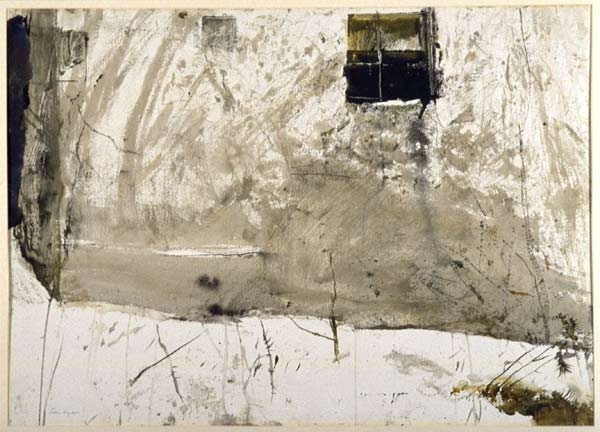
In this series, noted painter Joseph McGurl discusses plein air paintings by past masters that he finds instructive or inspiring. This week: “Benjamin’s House,” by Andrew Wyeth.
Andrew Wyeth made countless watercolor and pencil drawings on location. These would often be used as reference material for his studio paintings in watercolor, drybrush, and egg tempera. I am not sure if this was intended as a stand-alone work of art or as a study, but it is a beautifully constructed arrangement of shapes, and the craftsmanship is superb. At first glance, one notices the strong abstract qualities because of the tight cropping of the scene. It is part of a window, part of a building, and part of the ground; nothing is shown in its entirety. The placement of the dark shapes moves our eye from the window, down along the stain to the edge where the building meets the snowy ground, then to the dark shape at the left, and back to the window. Although this movement keeps our eye searching and activated, it is fascinating in that we never find the subject. It is a painting without a subject.
It also appears that there is a great deal of tight rendering. However, looking closer, we realize it is mostly slashes of paint applied quite loosely. By picking out just the important details, such as the twigs in the foreground and the window trim, Wyeth gives us the impression of detail throughout. Andrew Wyeth was also a master of value, and here, as is often the case with his art, he uses a full range from black to white. He sensitively observes the snow reflecting upon the shadow areas at the base of the building and contrasts this with the harsh black accents in the window and to the left of the building. We don’t need color in his paintings. By limiting his color, he was able to convey his emotional response to his subjects, which were often the structures and the working poor inhabitants of rural Maine and Pennsylvania.




